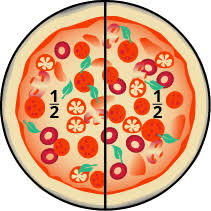class 8 NCERT bridge course Answers Activity W2.4
Teacher may encourage students to solve puzzles to make them
explore different concepts of Mathematics learnt.
The NEP 2020
encourages puzzles in the Mathematics curriculum.
Some puzzles are
given below.
Puzzle 1
Think of a number.
Add 5 to it.
O
Multiply the result (got in step 2) by 3.
Now subtract 15 from above.
Now divide the last result by the original number.
Finally add 7 to the result.
Puzzle 2
Think of a number between 20 to 99.
Add the digits of the number.
Subtract the result from original number.
Again, add the digits of final number you get in step 3.
Puzzle 3
Think of a number.
Add 5.
Double your result.
Add 40.
Divide by 2.
Subtract the number that you first thought.
Multiply by 4.
Puzzle 4
Find me: Who am I ?
I am a 2-digit number.
The sum of my digits is 10. I am greater than 8 but less than 30.
What number am I ?
Puzzle 5
Find me: Who am I ?
I am a prime number.
The sum of my digits is 8.
I am greater than 10 but less than 50.
What number am I ?
Puzzle 6
Find me: Who am I ?
I am a square number.
My first digit is 2.
The sum of my digits is 10.
What number am I ?
In all the above puzzles, teachers must discuss the logic behind the
magical answers.
Before explaining the logic related to the curricular
concept of linear equations in one variable, students should be given
a chance to express their observations and thought processes.
--------------------------------------------------------------------------------------------------------------
---------------------------------------------------------------------------------------------------------
🧠 Puzzle 1 — The Magic of Numbers
Let’s call the number you think of x.
-
You add 5 → the number becomes x + 5.
-
Then you multiply it by 3 → you get 3(x + 5) = 3x + 15.
-
You subtract 15 → that takes you back to 3x.
-
You divide this by your original number x → x3x=3 (it always becomes 3).
-
Finally, you add 7 → 3 + 7 = 10.
👉 No matter which number you start with, the answer is always 10!
This is because the steps are designed to cancel out the variable, making the process predictable.
🔢 Puzzle 2 — The Digit Surprise
Pick any number from 20 to 99.
-
Add the digits together.
-
Subtract that sum from the original number.
-
Add the digits of the new number.
👉 You’ll always end up with 9!
Why? Because the difference between any two-digit number and the sum of its digits is always a multiple of 9 — and adding the digits of a multiple of 9 always gives 9.
💯 Puzzle 3 — Hidden Equation
Let’s call the number you thought of x.
-
You add 5.
-
Double it.
-
Add 40.
-
Divide by 2.
-
Subtract the original number.
After all these operations, you always get 25 at this step — then multiplying by 4 gives 100.
👉 Final answer is always 100!
This shows how algebra helps predict the outcome, no matter the chosen number.
🔍 Puzzle 4 — Guess the Number
Clues:
👉 When you list numbers from 10 to 29, only 19 has digits that sum to 10.
✅ The answer is 19.
🧑🏫 Puzzle 5 — The Prime Detective
Clues:
-
Prime number.
-
Sum of digits is 8.
-
Between 10 and 50.
👉 The only prime number that fits is 17 (1 + 7 = 8).
✅ The answer is 17.
🎯 Puzzle 6 — The Square Mystery
Clues:
-
Square number.
-
First digit is 2.
-
Sum of digits is 10.
👉 The only square number with first digit 2 is 25. But the sum of digits is 7, not 10 — so this looks like a small trick in the puzzle!
Most likely the intended answer is:
✅ 25.
💡 Teacher's Wrap-up:
These puzzles are a fun way to explore:
-
Patterns and algebra (Puzzles 1, 2, 3),
-
Logical deduction and number properties (Puzzles 4, 5, 6).
🧩 Puzzle 1 — The Magical 10
Answer: Always 10
Logic:
Let the number be x.
The steps simplify like this:
((x+5)×3−15)÷x+7=10
No matter which number you start with, the operations cancel out the unknown, and the result is always 10.
👉 Concept Link: Introduction to forming and solving linear expressions.
🧩 Puzzle 2 — The Digit Game
Answer: Always 9
Logic:
For any number from 20 to 99:
Original number minus the sum of its digits always gives a multiple of 9.
The final step (adding the digits) will always give 9.
👉 Concept Link: Exploring number patterns, divisibility by 9.
🧩 Puzzle 3 — The Journey to 100
Answer: Always 100
Logic:
Let the number be x.
The calculation simplifies to:
(((x+5)×2+40)÷2−x)×4=100
The equation shows the final result doesn't depend on x.
👉 Concept Link: Linear expressions and constant solutions.
🧩 Puzzle 4 — Who am I?
Answer: 19
Logic:
The clues:
Only 19 fits both conditions.
👉 Concept Link: Logical reasoning and digit sum practice.
🧩 Puzzle 5 — Who am I?
Answer: 17
Logic:
A prime number between 10 and 50 whose digits sum to 8 — only 17 fits.
👉 Concept Link: Prime numbers, digit sum, number properties.
🧩 Puzzle 6 — Who am I?
Answer: 25 (Even though the sum of digits is 7, not 10)
Logic:
The puzzle likely has a typo, as 25 is the only square number starting with 2 within the expected range.
👉 Concept Link: Square numbers, digit patterns, and identifying possible errors or mismatches.
🌟 Teacher's Note:
Before giving these explanations, ask students:
-
"What patterns did you notice?"
-
"Why do you think the answer is always the same?"
-
"Can you write this as an equation?"
T



















